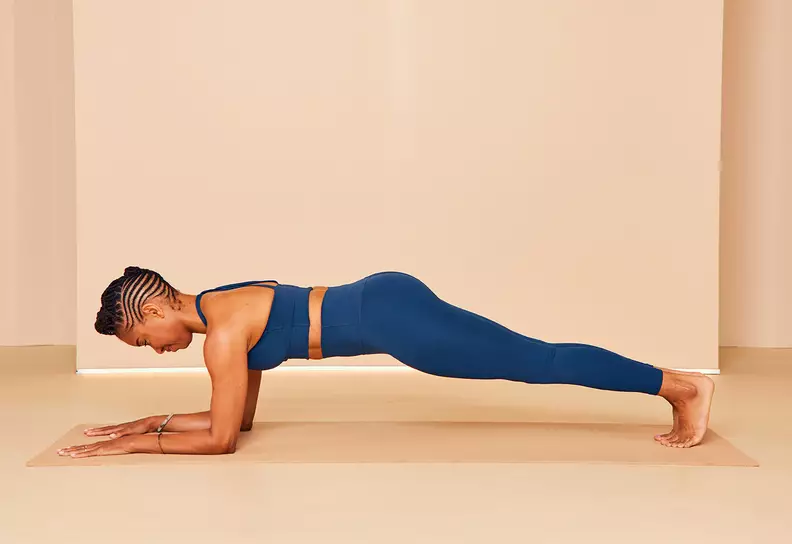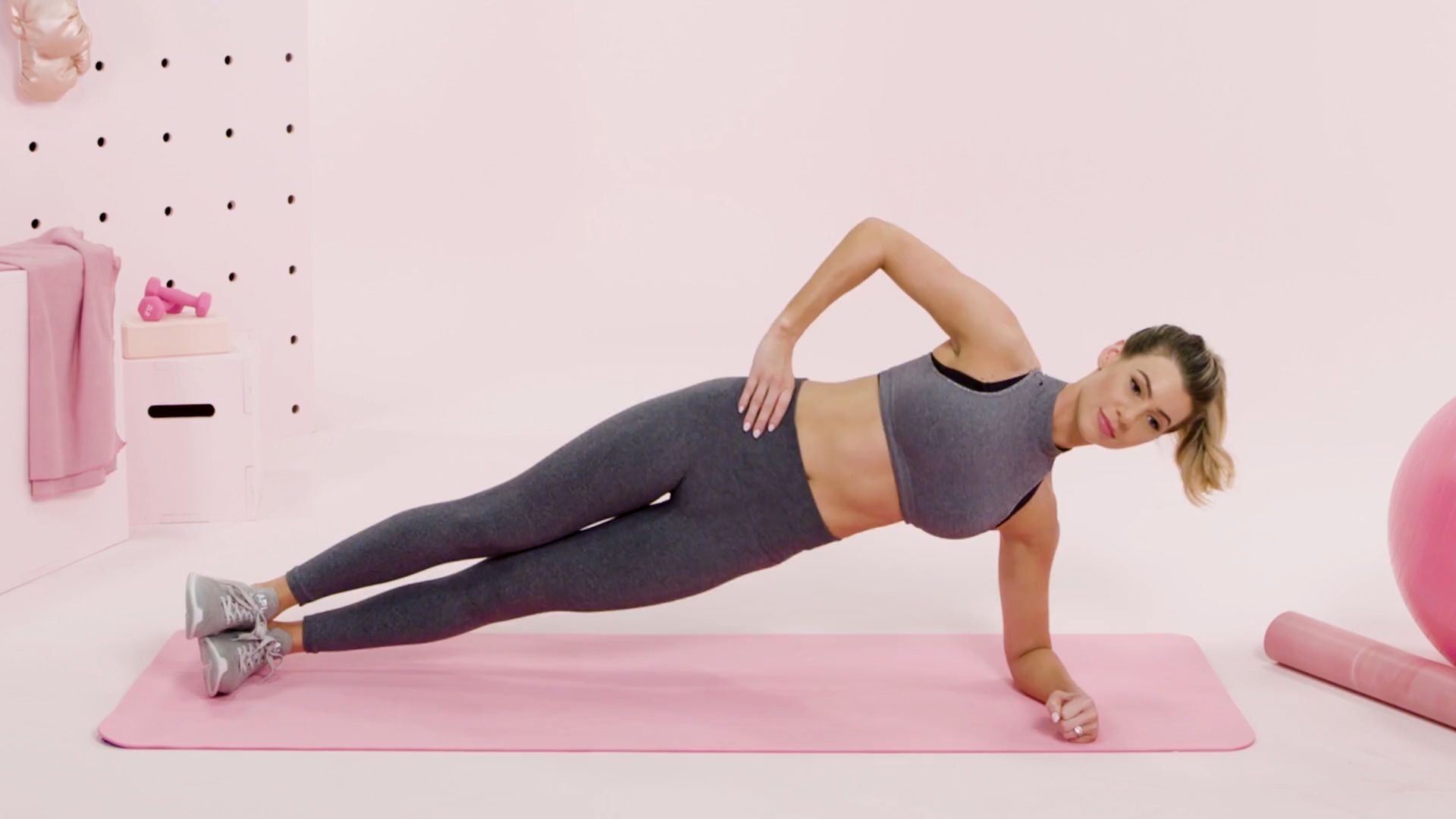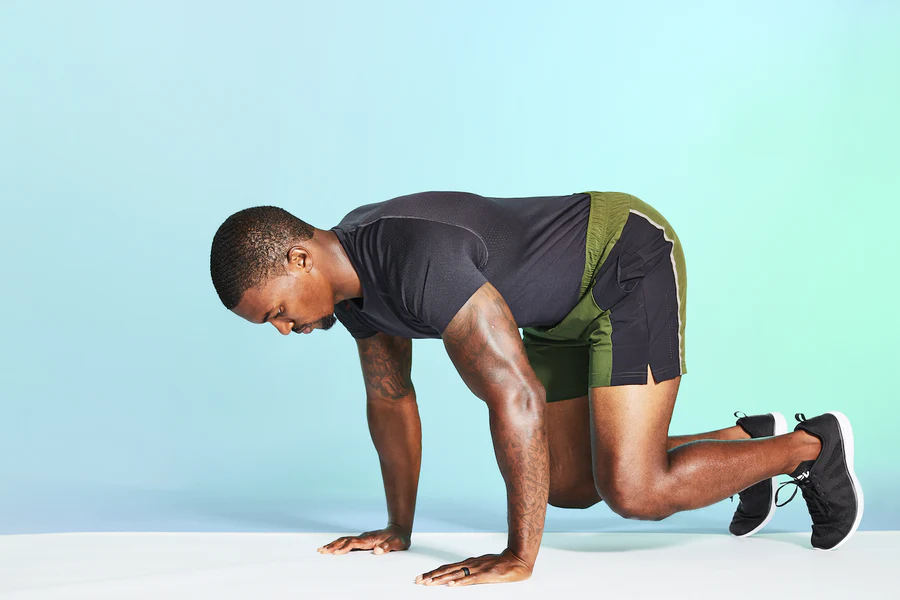Are you looking to transform your core strength and stability? Strengthening core muscles with static holds effectively builds a solid foundation for better overall fitness. Unlike dynamic exercises, static holds challenge muscles to maintain tension over time, enhancing endurance and improving posture. Dive into this article to discover how Strengthening Core Muscles With Static Holds can improve your core strength.
Strengthening Core Muscles with Static Holds: Effective Techniques for Stability and Power

Core strength is essential for everyday activities and athletic performance. Strengthening core muscles with static holds offers an effective way to build a strong, stable core. These exercises involve holding a position without moving, improving muscle endurance and stability.
Static holds work by challenging your muscles to maintain tension for extended periods, helping to build strength and improve posture. You can do these exercises anywhere, making them a convenient addition to your workout routine. They’re also great for beginners and advanced fitness enthusiasts alike.
Static hold exercises target various core muscle groups, including abs, obliques, and lower back. Incorporating these into your workouts allows you to develop a stronger, more functional core that supports your daily movements and helps prevent injuries.
Key Takeaways
- Static holds improve core strength and stability without complex movements.
- You can easily add these exercises to your routine, regardless of fitness level.
- Regular practice of static holds can enhance posture and reduce injury risk.
Understanding Core Muscles
The core muscles form the center of your body and play a crucial role in stability and movement, making strengthening core muscles with static a vital aspect of a well-rounded fitness routine. They include more than just your abs. Let’s explore the anatomy and importance of this muscle group.
Anatomy of the Core
Your core consists of several muscle groups:
- Rectus Abdominis: The “six-pack” muscles.
- Obliques: Side muscles that help with rotation.
- Transverse Abdominis: Deep muscle that wraps around your spine.
- Erector Spinae: Back muscles that support your spine.
- Diaphragm: Muscle that helps with breathing.
- Pelvic Floor Muscles: Support your pelvic organs.
These muscles work together to provide stability and support for your entire body. They connect your upper and lower body, allowing for coordinated movements.
Functionality and Importance
Your core muscles are essential for everyday activities and athletic performance. They help you:
- Maintain good posture.
- Lift heavy objects safely.
- Improve balance and stability.
- Enhance athletic performance.
- Protect your spine from injury.
A strong core helps recruit muscles, improving overall strength and power. It’s not just about looking good – a strong core is key for your health and fitness. Core strength also helps prevent back pain and improves your ability to perform daily tasks. From carrying groceries to playing sports, your core is always at work. By strengthening these muscles, you can move more efficiently and reduce your risk of injury.
Benefits of Strong Core Muscles

A strong core offers many advantages for your body. Strengthening core muscles with static holds helps you move better, feel more stable, and avoid getting hurt. Your core muscles play a big role in many everyday activities and sports.
Improved Balance and Stability
Strong core muscles help you stay steady on your feet. They keep your body centered when you walk, run, or do other activities. This is important as you get older. Your core acts like a bridge between your upper and lower body. It helps all your body parts work together smoothly. When your core is strong, you can react faster if you lose your balance. This can help prevent falls and keep you safe.
Enhanced Athletic Performance
A strong core boosts your sports skills. It helps you move better in all directions. This is key for many sports like tennis, golf, and swimming. When you throw, kick, or hit, your core gives you more power. It also helps you change direction quickly, which is great for sports like soccer or basketball. A strong core can even make you faster. When you run or sprint, it helps you transfer energy from your legs to your upper body.
Reduced Risk of Injury
Strong core muscles act like a natural brace for your spine. They help protect your back when you lift things or do twisting motions. When your core is weak, other muscles have to work harder. This can lead to strains or pulls. A strong core helps spread out the work more evenly. Your core also helps you keep good posture. This puts less stress on your joints and muscles, which can prevent injuries over time.
Alleviation of Lower Back Pain
Many people with back pain find relief by strengthening their core. A strong core supports your spine and takes pressure off your back muscles. When your core is weak, your back muscles often try to compensate for it. This can cause them to get tired and sore. Strong core muscles help share the load. Good core strength also helps you maintain better posture. This can reduce strain on your back throughout the day, whether you’re you’re sitting at a desk or doing physical work.
Principles of Static Holds
Strengthening core muscles with static holds is a powerful way to build strength and stability. These exercises involve keeping your muscles under tension without moving, making them highly effective for enhancing endurance and improving posture.
Did you Know?
You need to focus on your diet and workouts to boost your core strength.
Isometric Strength Training
Static holds are a type of isometric exercise. Your muscles contract, but don’t change their length. This builds strength in specific positions. You can do static holds with body weight or weights. For example, you might hold a plank or a weighted squat.
Static holds improve joint stability. They also boost your mind-muscle connection. Aim for holds lasting 10-30 seconds to get the most benefit. Adjust based on your fitness level and goals.
Time Under Tension
Time under tension is key in static holds. It refers to how long your muscles work during an exercise. With static holds, you increase time under tension. This can lead to more muscle growth and strength gains. Longer holds challenge your muscles differently than regular reps. They can improve your endurance and stability.
Start with shorter holds and gradually increase duration. This helps prevent injury and builds strength safely. Remember to breathe steadily during holds. It helps maintain proper form and reduces strain.
Essential Static Holds for Core Strengthening

Static holds are key for strengthening core muscles with static holds, building core strength and stability. These exercises target multiple muscle groups simultaneously and can be done with minimal equipment. They help improve posture, balance, and overall fitness.
Plank Variations
The plank is a versatile exercise for core strengthening. Start with a basic forearm plank. Place your forearms on the ground, elbows under your shoulders. Extend your legs behind you, balancing on your toes. Keep your body in a straight line from head to heels.
Try these plank variations:
- High Plank: Balance on your hands instead of forearms.
- Single-leg Plank: Lift one foot off the ground.
- Side Plank: Balance on one forearm and stack your feet.
Aim to hold each position for 30-60 seconds. As you get stronger, increase your hold time. Remember to breathe steadily and keep your core tight throughout the exercise.
Side Plank
The side plank targets your obliques and deep core muscles. Lie on your side with your elbow directly under your shoulder. Stack your feet or place one foot in front of the other for better balance.
Lift your hips off the ground, creating a straight line from head to feet. Hold this position, focusing on keeping your body aligned. Don’t let your hips sag. For an extra challenge, try these variations:
- Lift your top leg.
- Raise your top arm towards the ceiling.
- Perform small hip dips.
Hold the side plank for 20-30 seconds on each side. As you build strength, work up to longer hold times.
Hollow Body Hold
The hollow body hold is great for strengthening your entire core. Lie on your back with your arms extended overhead. Press your lower back into the floor and lift your arms, head, and legs off the ground.
Your body should form a slight curve, like a banana shape. Keep your core tight and avoid arching your back. This exercise engages your deep abdominal muscles and helps improve posture.
Start with 10-15 second holds and gradually increase. If it’s too challenging, bend your knees or keep your arms by your sides. As you get stronger, try extending your arms and legs further.
Glute Bridge Hold
The glute bridge hold strengthens your core, glutes, and lower back. Lie on your back with your knees bent and feet flat on the floor. Lift your hips until your body forms a straight line from knees to shoulders.
Squeeze your glutes and engage your core. Hold this position for 30-60 seconds. Keep your movements controlled, and avoid arching your back. To increase difficulty:
- Extend one leg straight out.
- Place your feet on an elevated surface.
- Add weight across your hips.
This exercise helps improve posture and reduces lower back pain. It’s also great for activating your glutes before other exercises.
Wall Sit
The wall sit is a challenging static hold that works your core and lower body. Stand with your back against a wall. Slide down until your thighs parallel the ground, forming a 90-degree angle at your knees.
Keep your back flat against the wall and your feet hip-width apart. Hold this position, focusing on engaging your core and quadriceps. Start with 20-30 second holds and work up to longer durations. To make it harder:
- Hold weights at your sides.
- Raise one foot off the ground.
- Perform small pulses.
The wall sit builds endurance in your core and leg muscles. It also improves balance and stability.
Here’s an additional video about static exercises.
By: Minus The Gym
Technique and Form

Proper technique and form are crucial for getting the most out of strengthening core muscles with static holds. They help you target the right muscles and avoid injury.
Proper Alignment
Your body position during static holds is key. Keep your spine neutral and engage your core. For planks, align your shoulders over your elbows. Your body should form a straight line from head to heels.
In wall sits, press your back flat against the wall. Keep your knees at a 90-degree angle. For hollow holds, press your lower back into the floor. Lift your shoulders and legs slightly off the ground.
Always check your form in a mirror or ask a trainer to spot you. Good alignment helps you work the right muscles and prevents strain.
Breathing During Holds
Don’t hold your breath during static exercises. Breathe steadily to keep oxygen flowing to your muscles. Try to inhale through your nose and exhale through your mouth. Keep your breaths deep and even. Focus on belly breathing. Let your stomach expand as you inhale and contract as you exhale.
If you find yourself holding your breath, shorten the hold time. Build up gradually as your breathing improves. Remember, proper breathing helps you maintain the hold longer and gets more oxygen to your muscles.
Progressing with Static Holds
Start with short hold times, like 10-15 seconds. Gradually increase the duration as you get stronger. Aim to add 5-10 seconds to your hold time each week. Once you can hold for 60 seconds, try a harder variation.
For planks, move from knees to toes. Then, try lifting one leg or arm. Wall sits can be made harder by holding weights or balancing on one leg.
Add static holds to the end of your workout when muscles are tired. This challenges your endurance and stability. Track your progress. Note your hold times and how the exercises feel. This helps you see improvement over time.
Integrating Static Holds into Your Routine
Strengthening core muscles with static holds can boost your core strength when added to your workout plan. The key is to balance strengthening core muscles with static holds with other exercises and do them often enough to see results.
Creating a Balanced Workout Plan
Mix static holds with other types of exercises. Add 2-3 static hold moves to your routine 2-3 times a week. Pick holds that work different parts of your core. Try a plank for your front abs, a side plank for obliques, and a bridge for your lower back.
Start with 10-20 second holds. As you get stronger, aim for 30-60 seconds per hold. Rest for 30-60 seconds between holds. Do 2-3 sets of each move. Remember other core exercises. Include crunches, leg raises, and twists to work your muscles differently.
Frequency of Static Hold Training
Do static holds 2-3 times a week. This gives your muscles time to rest and grow stronger. Space out your static hold days. For example, do them on Monday, Wednesday, and Friday.
You can add short holds to your warm-up or cool-down every day. Try a 10-second plank before your workout to wake up your core muscles.
Listen to your body. If you feel very sore, take an extra rest day. As you get stronger, you can do static holds more often.
Combining with Dynamic Exercises
Pair static holds with moving exercises for a full core workout. Try this combo:
- 30-second plank hold.
- Ten crunches.
- 30-second side plank (each side).
- 10 Russian twists.
Repeat this circuit 2-3 times. This mix works your core in different ways. You can also add holds to the end of other exercises. After a set of push-ups, hold the top position for 10 seconds. Or after squats, hold the bottom squat position. Always warm up before static holds. Do 5-10 minutes of light cardio to get your muscles ready.
Strengthening Core Muscles With Static Holds: Safety Considerations

Static holds can be very effective, but proper form and precautions are crucial. Knowing what to avoid and how to modify exercises will help keep you safe.
Common Mistakes to Avoid
Don’t lock your joints during static holds. This stresses your elbows, knees, and other areas too much. Keep a slight bend instead. Avoid holding your breath. Breathe steadily to maintain oxygen flow and prevent dizziness.
Don’t push through sharp pain. It’s a sign to stop and reassess your form or consult a professional. Watch your posture. Letting your back round or shoulders hunch can lead to injuries. Keep your spine neutral and core engaged. Take your time with long hold times. Build up slowly to prevent overexertion and muscle strain.
Modifications for Beginners
Start with shorter hold times. Aim for 10-15 seconds and gradually increase as you get stronger. Use support when needed. For plank holds, try dropping to your knees at first. For wall sits, don’t go as low. Pick easier variations. Instead of a full plank, try a forearm plank.
For hollow holds, keep your legs higher off the ground. Take more rest between sets. This gives your muscles time to recover and helps prevent fatigue-related mistakes. Use props for balance. A wall or chair can help you stay stable in standing holds like single-leg balances.
Tracking Progress and Setting Goals
Keeping tabs on your static hold performance is essential for strengthening core muscles with static holds, as it helps you improve over time. Setting clear targets in this process motivates you to push harder and achieve better results.
Recording Hold Times
Start by noting your current hold times for each exercise. Use a stopwatch or timer app on your phone for accuracy. Write down the date, exercise name, and duration in seconds. Create a simple log to track your progress. You can use a notebook or spreadsheet. Include columns for:
- Date.
- Exercise.
- Hold time (seconds).
- Notes (how it felt, any challenges).
Update your log after each workout. This lets you see improvements week by week.
Incremental Improvement Strategies
Set small, achievable goals to boost your static hold times. Aim to increase your hold duration by 5-10 seconds each week. Try these methods to improve gradually:
- Add 2-3 seconds to each hold per session.
- Do an extra set of holds in your workout.
- Increase the difficulty of the exercise slightly.
Mix up your routine to challenge different muscles. This prevents boredom and helps you progress faster. Remember to rest between workouts. Your muscles need time to recover and get stronger.
Supplementary Nutrition for Core Strength
Protein is key for building and repairing muscle tissue. Aim for lean sources like chicken, fish, eggs, and legumes. Complex carbohydrates provide energy for your workouts. Choose whole grains, fruits, and vegetables to fuel your body.
Healthy fats support hormone production and reduce inflammation. Include nuts, seeds, avocados, and olive oil in your meals. Stay hydrated by drinking plenty of water throughout the day. This helps with muscle function and recovery.
Consider These Supplements to Support Core Strength:
- Whey protein powder.
- Creatine monohydrate.
- Branched-chain amino acids (BCAAs).
- Omega-3 fatty acids.
Timing matters, too, when focusing on strengthening core muscles with static holds. Eat a balanced meal with protein and carbs about 2-3 hours before your core workout. After exercising, have a protein-rich snack within 30 minutes to aid recovery. Remember, a balanced diet is crucial. Each food or supplement can only replace a well-rounded nutrition plan. Pair your core-strengthening exercises with proper nutrition for the best results.
Maximizing Core Strength: The Impact of Static Holds on Your Fitness Journey
Strengthening core muscles with static holds can significantly enhance your fitness and stability. These exercises require muscles to maintain tension without movement, build endurance, and effectively improve posture. Integrating static holds into your routine allows you to target multiple core muscle groups, from your abs to your lower back, making them a versatile addition to any workout plan. Whether you’re a beginner or an experienced athlete, static holds can help develop a strong, stable core that supports athletic performance and daily activities.
Focus on proper technique and gradually increase hold times as you build strength to get the most out of your static hold exercises. Start with shorter durations and maintain good form to avoid injury and maximize benefits. Combine these static holds with dynamic exercises and balanced nutrition for the best results. By incorporating static holds into a well-rounded fitness regimen, you can achieve a more powerful core, improved posture, and reduced risk of injury over time.
Frequently Asked Questions
What Are the Benefits of Incorporating Static Holds Into Core Muscle Workouts?
Static holds improve core stability and endurance. They target deep abdominal muscles that are often missed by other exercises. These holds enhance overall body control and posture. Static holds also boost mind-muscle connection. You learn to activate and engage your core muscles more effectively.
Which Static Hold Exercises Are Most Effective for Core Strengthening?
The plank is a classic and highly effective static hold. It works multiple core muscles at once. Hollow holds are great for targeting deep abdominal muscles. They also improve lower back strength. Side planks strengthen obliques and improve lateral stability. Wall sits build leg and core endurance simultaneously.
How Can Beginners Get Started With Isometric Core Exercises?
Start with shorter hold times, like 10-15 seconds. Focus on proper form rather than duration. Begin with basic exercises like planks or wall sits. As you gain strength, gradually increase hold times and try more challenging variations. Listen to your body and rest between sets. Consistency is key to seeing improvements.
Stay Fit and Join the Fit After 55 Community!
Explore fitness inspiration at Fit After 55! Our website (Vitality Senior Living) offers engaging content, expert advice, and product reviews designed for seniors. Connect with others who share your enthusiasm for staying active and healthy on our Facebook page (Fit After 50).
Let’s embrace this fitness journey together and show that age is just a number!

